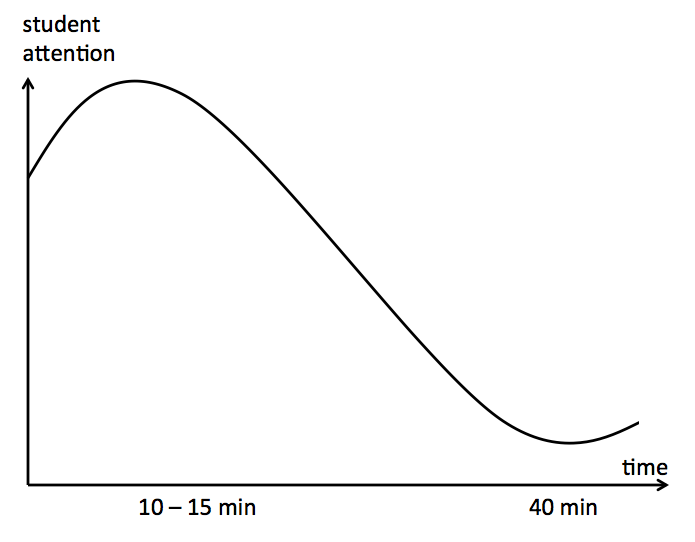
Development of student attention over time
Do we really know how student attention develops over time?
One thing that is shown over and over again in teachers’ trainings is the curve of how student attention peaks 10-15 minutes into the lecture, then declines sharply, and then starts picking up again at about 40 minutes (so 5 minutes before the end of a typical lecture).
I come across this curve all the time, and I’ve always been curious how one would be able to measure student attention, and whether those measurements would really be valid. So I finally got around to doing a literature search on the empirical basis of this curve and found a literature review by Wilson and Korn (2007). They were also getting curious about the origin of this curve, and looked into empirical studies on the topic.
What they found is interesting, though not surprising: the literature does not support the “attention drops after 10 to 15 minutes” claim that is often made. However, it is also clear that student attention does vary throughout a lecture, but there are more important variables than just a time dependency. Which is encouraging – if student attention does depend on more than just time into the lecture, there are ways to influence it, too. The authors call for more research and an empirically based estimate if people want to continue using the student attention curve to encourage teachers to develop ways to keep students interested in their lectures. They conclude that “Beyond that, teachers must do as much as possible to increase students’ motivation to “pay attention” as well as try to understand what students are really thinking about during class.”
What could teachers do to increase students’ motivation to pay attention during class? The main thing seems to be to change activities regularly. For example introduce clicker questions or show demonstrations (but then don’t forget the peer instruction phases before and after the demonstration to increase learning!). Or have students work in groups for a bit, or even just switch from a Powerpoint presentation to explaining something on a blackboard. Or include some quick physical activity. If you are getting bored by your own classes, chances are students have been asleep for hours and you just haven’t noticed.
—
Wilson, K., & Korn, J. (2007). Attention During Lectures: Beyond Ten Minutes. Teaching of Psychology, 34 (2), 85-89 DOI: 10.1080/00986280701291291
